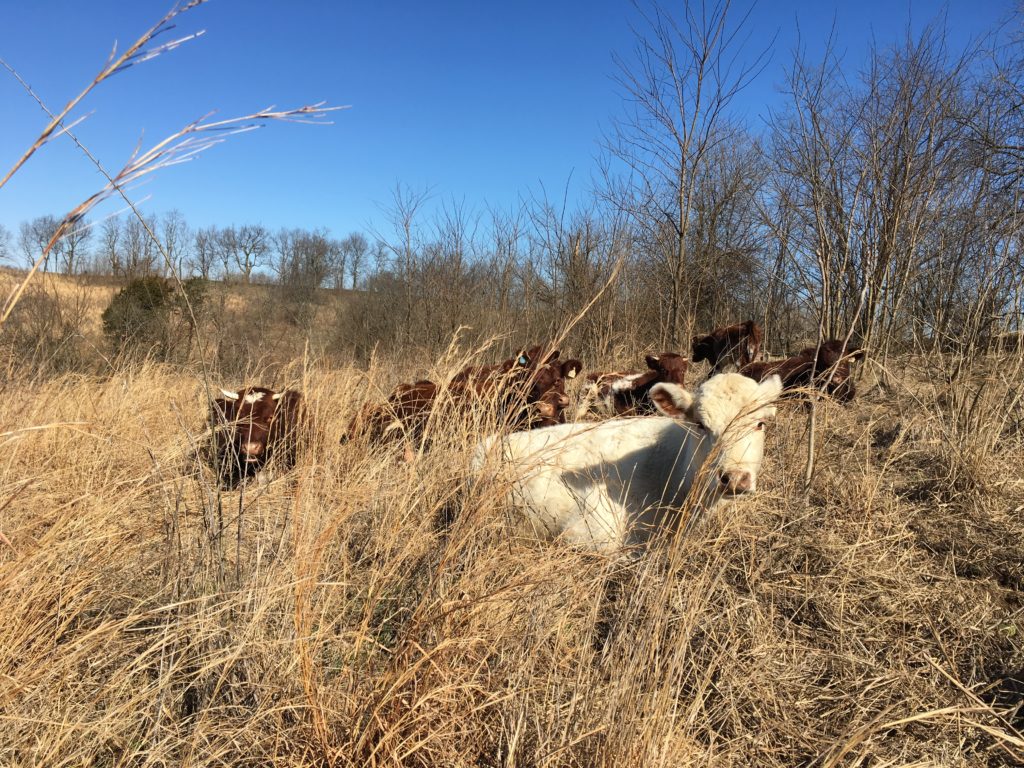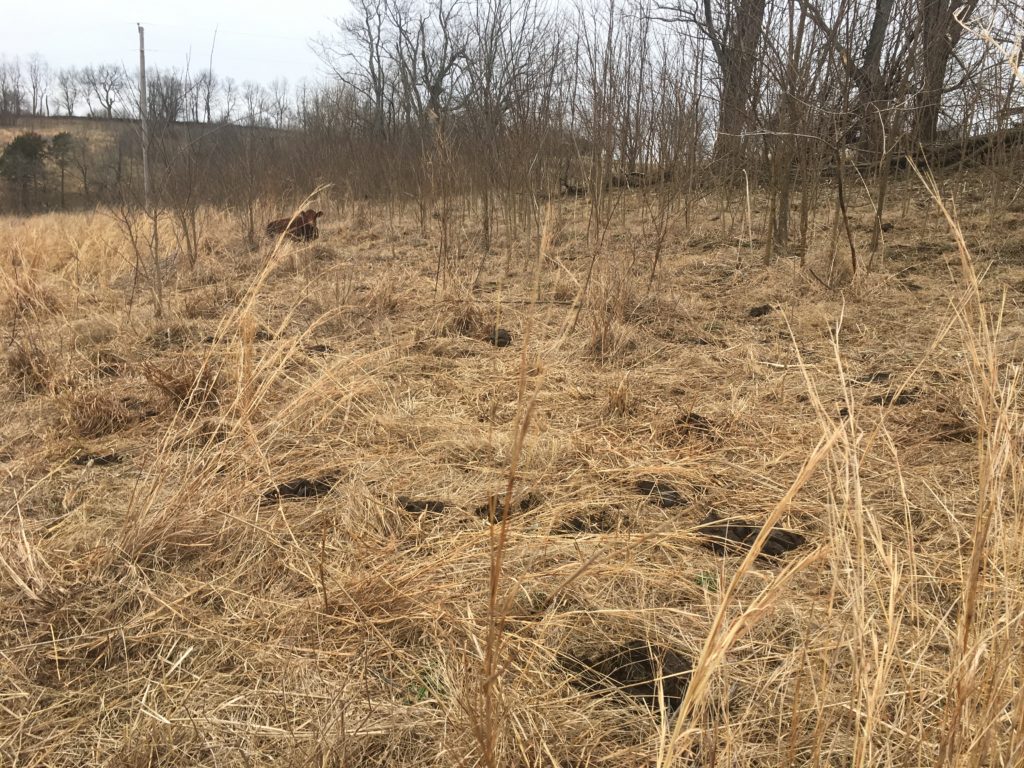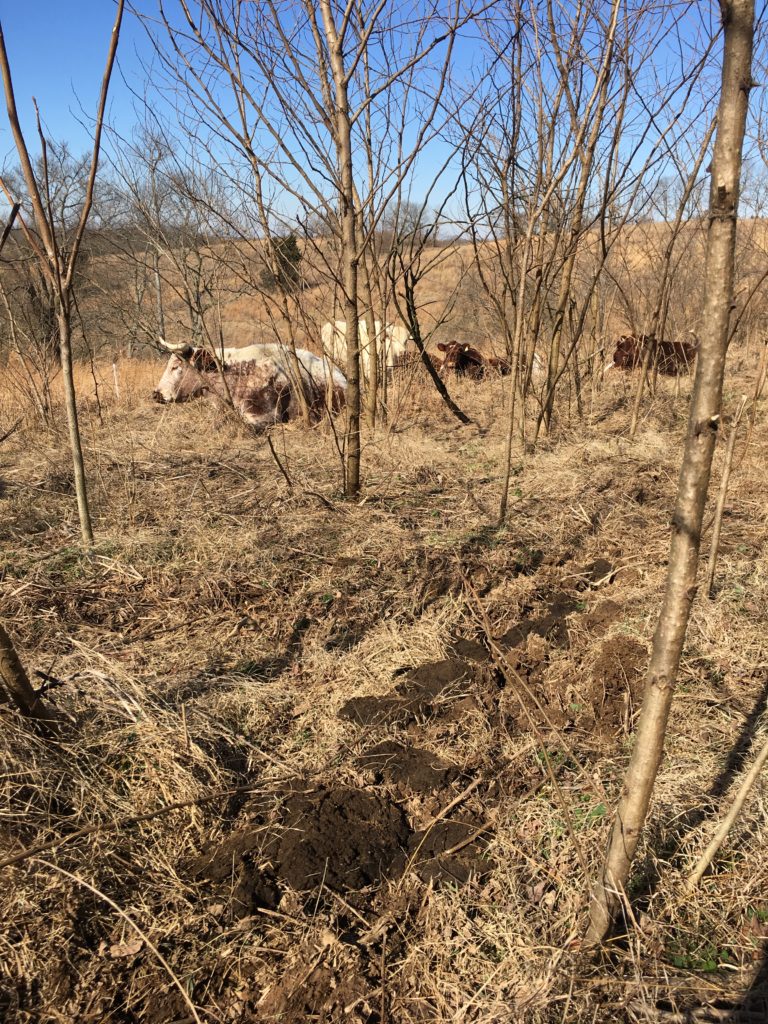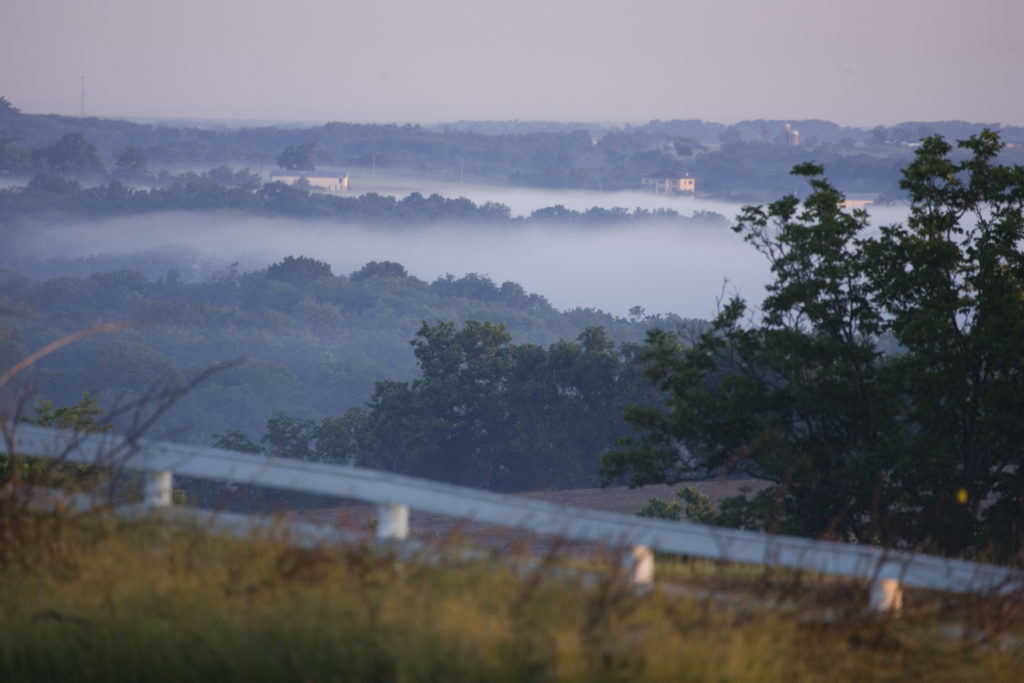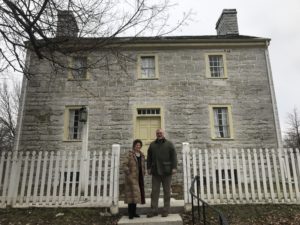
Early 20th century photography creates a spooky effect in this Village scene.
It’s that time of year when everyone is in a spooky mood. If you want to take part in the spirit of the season, there are so many ways to do it. Maybe something more low-key is your thing, like trick-or-treating or going to a Halloween party. But for others, this time of year is more about horror – haunted houses, scary movies, blood, guts, dismemberments, death and just general terror. This week, I’m feeling more inspired by the latter.
Death was a constant part of the landscape at Pleasant Hill. The Shakers, based on their interactions with the spiritual world, were quite in tune with this – when the spirits of departed Shakers visited, they couldn’t help but think about it. Also, many things happened in the physical world that were out of their control – scary situations that often (almost) resulted in death for both humans and animals. Many of these situations came about in ways that I would never think of, mainly because they resulted from situations that very few of us find ourselves in today. Like scenes from a scary movie, below you’ll find a sampling of journal excerpts documenting these very kinds of events. Have a terrifying week!
William Runyon went to the steam mill in Jessamine Co. and on his return home in attempting to drive into the boat it gave way, not being fastened, and let the horses into the river, one of which was killed by falling on the iron pin of the steering oar.
(October 31, 1846 – Filson Historical Society vol.4, East Family Deaconness Journal)
Louisiana Dunn who had been ailing some 5 or 6 months past, and had for a few days become delerious went from the Nourses room to the west Garett (Cen) and Jumped out of the window. She went feet foremost, as is most probable and strange to tell! appeared to be but little the worse of it so far. (September 3, 1847)
…
It is thot that Louisiana Dunn was much worse hurt by her leep than we were led to believe. It is now the general belief that she will not long survive it (September 4, 1847)
…
Louisiana Dunn who had been confined for several months to her bed and in addition to that had leaped from the Garret window of the Center House on the 3rd of Sept last, died at 1 oclock AM. She stayed at the old Center house 3rd story, NE Room.
(December 12, 1847 – Zachariah Burnett Journal, Harrodsburg Historical Society)
Charles Crutcher a colored servant that we hired to help tend the Grist Mill was caught up by the band of the corn sheller while attempting to put it on, and whirled around the shaft with the velocity of mill gearing and horribly mangled and bruised, tho not killed, before the mill could be stopped. His left arm was broken in three places and the elbow dislocated, his leg broken, and feet badly bruised, etc.
(April 5, 1853 – Filson Historical Society vol.4, East Family Deaconness Journal)
Isaac Shields was run over by an ox wagon loaded with husked corn, and dangerously wounded, tho strange to tell, not killed.
(November 5, 1853 – Filson Historical Society vol.4, East Family Deaconness Journal)
Francis Shain was badly hurt. He was blasting stone in the cistern at the Centre Family at the time. He was in the act of throwing fire down on the load of powder when the place where he was standing fell in and he fell 19 feet down. He might as well have fallen into a lion den for he had the load of powder to encounter. It went off but fortunately did not hurt him. However, he was badly hurt by the fall his leg being fractured and his ankle put out of place.
(June 6, 1855)
Charles Asher, a neighbor, while at work on our premises, was killed by the falling of a limb which partially lodged when he fell a tree; he survived the sad disaster about four hours, when he breathed his last.
(January 13, 1859 – East Family Journal, 1856-1871)
Ruffianly & Beastly conduct. Whilst Elder B. B. Dunlavy was laboring with Edward Cooper, & kindly advising him to reform his ways, or peaceably withdraw from the Society became enraged, & fell upon Elder B. beating him on the head & face, making some severe wounds, but not dangerous, the weapons used was a crutch & other Bludgeon – Brn Abm Kulp & James Shelton, being below & hearing the fuss, ran upstairs, (in the little stone shop) & took the would be assassin off & thereby saved Eld Benjamin’s life, who received the blows without offering resistence – The Brn sent the scamp down into the yard in some haste – who then made his way up to the Shoe Shop at the East family, & being requested by Elhanan Scott to withdraw he made a pass at him & inflicted a slight injury, when some young Brethren interfered & sent him out into the highway – & he left the premises
(November 29, 1870 – East Family Journal, 1856-1871)
Tragedy! The most lamentable tragedy occurred to day at the West Family. A foolish feud that has been cherished for years between the Pennebaker & Spencer families culminated in a fracas in which Wm. Pennebaker inflicted a severe & dangerous wound on the left side of Henry Spencer’s neck, with a saddler’s tool called a half moon laying it open horizontally through the back of the ear, near 6 inches in length, & an inch & 1/2 or more in depth, which gaped open about the width of three fingers. Fortunately, however, neither the leader nor the jugular vein was severed, so that he did narrowly escape with his life. Tho William claimed that it was accidentally done in self defense.
(January 7, 1871 – East Family Journal, 1856-1871)
Disaster ! Mary Hardin (alias Stocton) & her husband Tabitha Harden & Lucinda Reynolds started in Stocton’s buggy down the River Road about Sunset to view the Towers and Scenery, and when they got down to the watering trough on the Cliff, Mary was driving and the man was walking behind and the man was walking behind, the horse shied and backed off the road. Mary & the two Sisters Tabitha & Lucinda leaped out and the horse & buggy tumbled off backwards, crashing the buggy to pieces, but not injuring the horse or mare seriously. The Sisters escaped with but little damage, while Mary is thought to be considerably injured internally. The mare was thrown several rods down the precipice where she lodged & they tied her there till morning when she was brought up not much hurt. A sad catasrophe! But a happy escape considering the perilous situation. Mary Stocton is an Ex-Shaker & came here on the 13th inst on a visit & was taken sick next day & has been unable to returne home till now. This will detain her longer.
(August 21, 1875 – Filson Historical Society v.16, Ministerial Journal)
Disaster Two Sisters Lucinda Reynolds, & Susan Murray with Charlie Kirk went to South toll gate to see the Gate Keeper Jo Trainer who was sick & coming home the horse ran down the hill, this side of the gate and turning out of the Road the Buggy turned over and bodly crippled Susan Murray, breaking her Collarbone with hip and side contusion, head cut & bruised up generally. Lucinda & the boy were some bruised but not dangerously.
The buggy which belonged to the Office was left a perfect wreck. The horse of A Kulp’s Diamond did not seem to be frightened buy stopped after breaking loose from the carriage & calmly surveyed the wreck.
(April 1, 1878 – Filson Historical Society v.16, Ministerial Journal)
Stock Five sheep were killed by a hay stack falling on them at the Upper Farm. Loss $20.00.
(November 12 1879 – Filson Historical Society v.16, Ministerial Journal)
The CF had a fine thorough bred bull killed by lightning today. He was Durham. They called him Captain. He was in his lot just North of the Center Barn. This took place between 9 & 10 o’clock A.M. He is 7 years old worth $500 it is said.
(May 11, 1882 – Filson Historical Society v.20, Henry Daily Journal)
Patsy Gregory fell down the garret stairs at the Centre Family Wash House from top to bottom yesterday and received a ghastly wound or cut on her forehead and dislocated her right wrist and received many contusions and bruises all over. Lamentable misfortune for one so aged – 76 years old.
(October 8, 1883)
Sister Lyddie Coony caught fire to her apron while near the stove and was badly burned. She is now in the nurses room under treatment.
(April 9, 1889)
Abram Kulp, a highly respected member of the Society of Shakers, Pleasant Hill, died Sunday, aged sixty eight years. For more than sixty years he lived at the village and was for many years a farm deacon, understanding his business and attending to it with industry and energy. A week ago he got upon his faithful horse, Pilot and as if stricken with vertigo fell off on the other side and lay unconscious. He was soon taken to a comfortable room but never, again, became conscious. A month previous to this accident, he was found on the Pleasant Hill and Danville road, lying under his prostrate horse. So soon as Messrs. Caldwell and Brown had dragged him out. The horse, of his own volition got up. Brother Kulp’s left collar bone was broken but otherwise he seemed to be uninjured. The funeral was conducted, yesterday, in the solemn and simple manner of the Society and his remains were consigned to their last resting place by his father and other relatives who had been faithful Shakers. He was not only popular with his people but a favorite with all who knew him, many of our citizens attending the obsequies.
(March 31, 1897 – The Harrodsburg Sayings)
Sometimes, as you can see here, real history is just as harrowing as any made up story. Happy Halloween from Shaker Village!
Aaron Genton is the collections manager…
